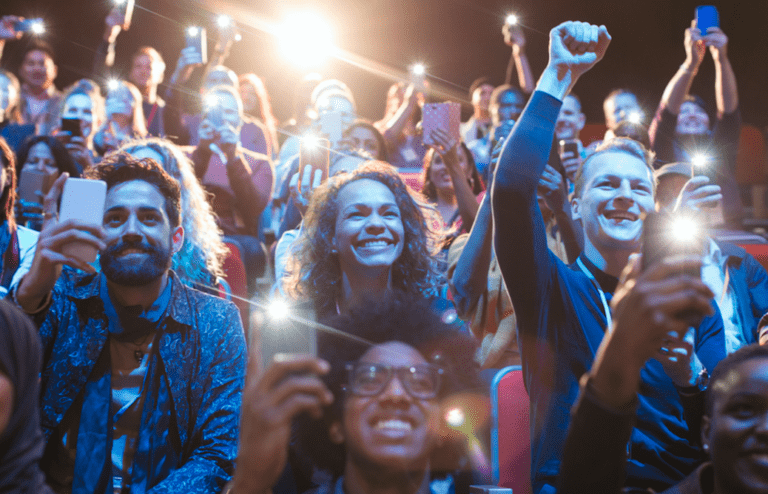For most event creators, driving attendance is a number one concern – it’s what pays the bills, right?
In order to thrive, you need to keep casting your net to bring in new customers. However, if you’re fishing in the same small pool, you might find that task gets progressively harder.
According to nearly 65% of the creators who responded to our 2019 Eventbrite Pulse Survey, reaching new attendees was one of their biggest challenges last year. They were also worried about increased competition for attendees, with 39% citing it as the trend that will have the biggest impact on them in 2019.
So what can you do to tackle these challenges? We asked 9 creators to tell us how they’ve successfully grown their audiences by tapping into new markets…
-
Change the perception of your event
Perhaps one of the simplest steps you can take to attract a new set of people to your event is to adjust your messaging. A great example of this is Pride in Hull, which succeeded in growing its attendance from 9,000 people to 50,000 in three years by re-positioning itself as something for all the family.
Matt Walton, Chair of Pride in Hull, says: “This incredible rise in audience numbers over a short time was largely due to us taking a major step up in our marketing, shifting the perception of what a pride event is and who it’s for. We focused on highlighting how family-friendly and welcoming it is and encouraging everyone to attend, without losing its heart as an LGBT+ event.”
He adds: “We also listened to our audience feedback to shape our stage offer, catering to their tastes more closely, which has seen our lineup announcements regularly reach nearly 150,000 people. Ultimately, we haven’t felt confined by what people think our event should be and haven’t shied away from making changes. This has ensured the event hasn’t become stagnant and feels fresh.”

-
Divide your event up
If you’re trying to appeal to everyone it can result in weak messaging that doesn’t really resonate with anyone. A solution to that, says Jonathan Emmins, Founder of Amplify, is to divide events up into sections, which cater to specific audiences.
“We’re now designing single events that cater for multiple audiences over a number of days,” he says. “For YouTube’s subscription service, YouTube Music, we simultaneously launched to industry and consumers alike in 2018.
“’In Residence’ took place at 180 The Strand with a series of immersive experiences, talks and gigs and over four-days targeting different groups at different times from artists, management, media and influencers, to internal and external stakeholders and end-consumers.”

-
Change the format
If the events you organise run to a traditional format, shaking things up a bit could help attract a different crowd. That’s exactly what HelloGrads did to gain more interest in its careers events.
Sophie Phillipson, Co-Founder of HelloGrads, says: “When we started the Creative Talent Festival with the University of Westminster, the goal was to take the old careers fair format and make it an interactive and inspiring experience. The students were given a stage to showcase their talents with live performances and an exhibition of student and graduate work.
“We had CV workshops, discussion panels and speeches from entrepreneurs, coaches and professionals. We had experts teaching soft-skills seminars like how to network, how to create your personal brand, time management and an introduction to mindfulness.
“We found the refreshed format attracted a new audience – those with entrepreneurial aspirations and those who fancy working for startups and challenger brands.”
-
Expand the programme
Finding a niche can work really well for events, but it’s also possible to be “too niche” – the balance has to be just right. Ottilia Ordog, the organiser of Góbéfest, an annual celebration of Transylvanian arts and culture, realised her event needed wider appeal to succeed.
She decided to deliver an extended programme, shining a light on the culture and folklore of ten other European countries, including Romania, Bulgaria, Turkey, Lithuania, Croatia, Hungary, Greece and Slovakia.
“This not only helped with bringing in extra funding to secure the festival’s future, but also diversified its audience. People travelled to the event in Manchester from as far away as London and Southampton.”
She adds: “Niche programming at the right time of day also helped to bring in new audiences. Baby music events were timetabled in the mornings to suit this group’s schedules. Meanwhile, free classical music and operetta programming brought in an audience that is not usually associated with music festivals.”
Getting the word out about Góbéfest’s diversified programme was vital and Ottilia relied heavily on PR and Facebook. “Our local TV news programme, BBC North West Tonight, came to film one of the dance troupes performing a traditional bottle dance, and it was viewed online by almost 25,000 people”.
-
Target key attendees individually
If you’re looking to attract specific types of people to your event, it can pay off to take a more strategic approach, by reaching out to them directly. This is what digital agency Noisy Little Monkey did to drive up the quality of attendance at its Digital Gaggle event.
“We researched brand marketers in the Bristol area and sent “squishy” post out to them,” says Claire Dibben, Marketing Manager at Noisy Little Monkey. “There was a Digital Gaggle notebook and a named invite asking them to come along and use their notebook to write down their new ideas from the event. We actually had someone tell us they bought a ticket because of this.”
Claire adds that changing the event from free to paid has also helped them to attract the right crowd: “When tickets were free, we’d get a lot of freelancers attending the events along with other agencies, which is great for the industry but as a lead generation exercise it wasn’t working. By charging for the conference we’ve given it more perceived value and have attracted more of our target delegates such as in-house marketers from brands.”

-
Engage with local businesses
Joining forces with other businesses and organisations is a great way to instantly access new customer bases.
Louize Clarke, Founder of ConnectTVT, sought to get multiple local partners on board for the 2018 Festival of Digital Disruption in Reading. She galvanised their support by designing an app that enabled users to discover and explore indie retailers through gamification.
“We wanted to open the Festival of Digital Disruption up to a non-tech audience so engaging the independent retail and foodie community was a great way to do this. We had 30 outlets sign up to the app and it gave the event real purpose outside the three days it ran for.”
Louize adds that engaging with schools, colleges and universities also helped bring in a new crowd: “Good old fashioned direct contact worked best for us when it came to engaging students, particularly building the rapport with the uni, which was a real target for us. It was really about investing the time to excite and inspire the students, and producing super-shareable, relevant content. The uni students were brilliant at sharing the event with their own community, creating plenty of noise around the event.”
-
Diversify your offering
We’re all different, and what sounds great to one person might not float the boat of another. By running a range of events you can appeal to different personalities. That’s what adult brand Killing Kittens has done, diversifying from its original parties into workshops, educational events and social events.
“KK currently operates parties worldwide in 12 countries, alongside its “safe-for-work” sister brand, Kurious Kittens, which delivers live workshops and events that appeal to members curious about sexual exploration but not ready to step into the parties,” says Emma Sayle, Founder and CEO of Killing Kittens.
Recently, Killing Kittens teamed up with spin brand 1Rebel to launch its first ever social fitness class, Kurious Ride. Events like this help introduce participants to the Killing Kittens online community and allow them to discover what the brand is all about.
Adds Emma: “Another tactical approach we employ for reaching new potential members is delivering promotional offers for current members to bring along friends – therefore reaching new audiences via word of mouth marketing, by far the best marketing tool out there to exploit.”

-
Make it ‘Shareable by Design’
Word of mouth is the most effective form of marketing there is, so it makes sense to try and get your event attendees to spread the word. According to Sean Pruen, Experiential Creative Director at UNIT9, the agency has been able to expand its reach by making its events inherently shareable.
“At UNIT9, we make sure events, live shows and experiences reach new audiences through a central value of being ‘Shareable by Design’,” he says. “What this means is there are plenty of opportunities for attendees to discover moments for themselves and find vistas of wonder where they want to take photos.
“This way experiences are organically shared verbally and digitally on social without any obvious awkward force from a brand. This type of sharing is the strongest commercial influence in the world of advertising today – brand awareness through an authentic audience voice.”
An example of UNIT9’s ‘Shareable by Design’ concept is the Halloween-themed immersive theatre experience it organised for JBL speakers with Google Assistant.
“The product’s voice command functionality was used to trigger all sorts of surprises that both terrified and humoured guests. These interactions were shared in abundance by them.”

-
Make it interactive
People love to get hands on and try new things – especially if it’s something they wouldn’t normally get the chance to do. Adding these types of experiences to your event can increase its appeal, says Aaron Raybe, UK Director of Experiential and Live Events at Momentum Worldwide.
“Momentum worked with Premier League to create a fan park in India,” he says. “The event gave people the chance to be compared to Premier League footballers by measuring the speed and accuracy of their own kicks against footballers’, as well as a VR experience for people to experience a match as if they were a fan attending.
“On top of this, visitors could create their own Topps playing card, meet former Premier League stars and take pictures on a double-decker bus, similar to the one used for the victory parades. With so many different aspects, it created a fully immersive experience that engaged consumers who may not have taken an interest in football before.”

Conclusion
Don’t be daunted by dwindling ticket sales – as these real life examples show, there’s plenty you can do to give your event fresh appeal.





